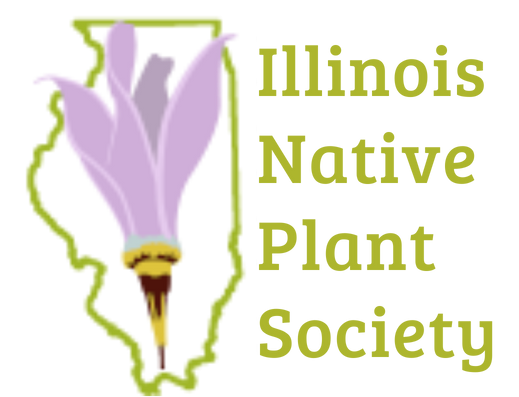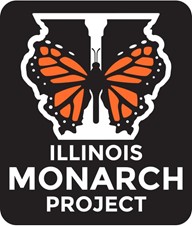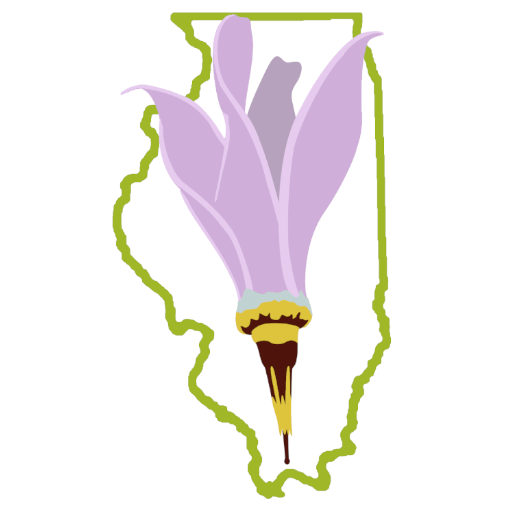Be Among the Super Generation to Save the Monarchs!
-Terri Treacy
It takes 2 or 3 generations of monarch butterflies to migrate from the mountains of Michoacán, Mexico, to the prairies of Illinois in the spring months. By late summer, a ‘super generation’ emerges, equipped to travel an estimated 2,500 miles back to Mexico for overwintering. Unfortunately, over the past 20 years, the eastern monarch butterfly population has faced a significant decline in migratory habitat.

The Illinois Monarch Project was formed to establish a long-term action plan to enhance monarch butterfly reproduction and survival in Illinois. In collaboration with public and private partners, and individuals across the state, the Action Plan has been adopted and the implementation phase has begun.
THE ILLINOIS MONARCH PROJECT
The Illinois Monarch Project (IMP) is a coalition of agencies (IDNR, IDOA, IDOT, IEPA), organizations, and individuals committed to helping monarch butterflies thrive throughout Illinois. The foundational tenets of the IMP include:
- Establishing a long-term action plan to enhance monarch butterfly reproduction and survival in Illinois.
- Engaging all hands on deck by partnering within the agriculture, rights-of-way, urban, and natural land sectors.
- Promoting and supporting voluntary conservation action by private landowners.
- Supporting regional, national, and international monarch butterfly conservation strategies.
ABOUT THE IMP ACTION PLAN
The state has a goal of adding 150 million new milkweed stems and other nectar resources to the Illinois landscape by 2038. The IMP Action Plan identifies significant achievements made toward that goal since 2014 and lays out current and future strategies and actions that can be undertaken to support Illinoisans in their efforts to reach the goal.
The development of this IMP Action Plan was coordinated by the Technical Steering Committee, whose members also sought feedback and contributions from sector leaders as well as many other stakeholders and individuals. Stakeholders within each Sector were given a chance to review and comment.
The IMP intends all strategies and actions presented in this plan to guide the implementation and advancement of a voluntary, statewide conservation effort based on the best available science. Moreover, the action plan is intended as a living, working document, because the IMP recognizes that particular strategies and other elements of this plan may be altered and adjusted as state- and region-wide conservation efforts and monarch conservation plans evolve over time.
One feature of the Action Plan is the Route 66 Monarch Corridor initiative. The Corridor spans 33 miles on either side of the historic highway, creating a 66-mile-wide corridor that runs through the heart of the INPS Central Chapter territory. The corridor serves as a rallying point for outreach and collaborative habitat work on the ground across a range of urban and rural landscapes. To learn more about the project see accompanying article in this issue.
WHAT YOU CAN DO!
Take the Pledge! From agreeing to share information on social media to planting a pollinator plot, or many choices in between, there is a way for everyone to contribute. Please take a few moments right now to Take the Pledge!
Also, check the website and follow IMP on social media to keep up with upcoming events. The next virtual event in the Monarch Summit series is coming up on January 19th, and sign up is open online.
For more information, please contact Terri Treacy.
TIMELINE
2014: White House establishes Pollinator Health Task Force and the USFWS is petitioned to protect the monarch under the Endangered Species Act.
2015: Illinois declares the monarch a species of greatest concern; the Midwest Association of Fish & Wildlife Agencies (MAFWA) begins a 20-year plan for monarch conservation in Illinois.
2016: Illinois Monarch Project hosts its first statewide summit.
2017: Illinois designates milkweed as the state wildflower; MAFWA sets a goal of adding 1.3 billion monarch stems across critical monarch habitat by 2038. Illinois’ share is 150 million!
2018: Illinois Departments of Natural Resources, Agriculture, Transportation and Environmental Protection agreement committing their support of the Illinois Monarch Project.
2019: Illinois designates the month of May as Monarch Month to be observed annually in honor of the state insect.
2020: The IMP technical steering committee, with help from stakeholders across the state, completes the Action Plan; Action Plan signed by agency directors from Illinois Departments of Natural Resources, Agriculture, Transportation and Environmental Protection.


